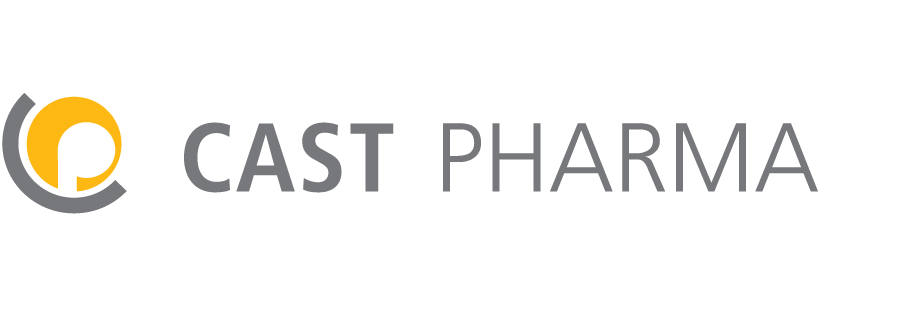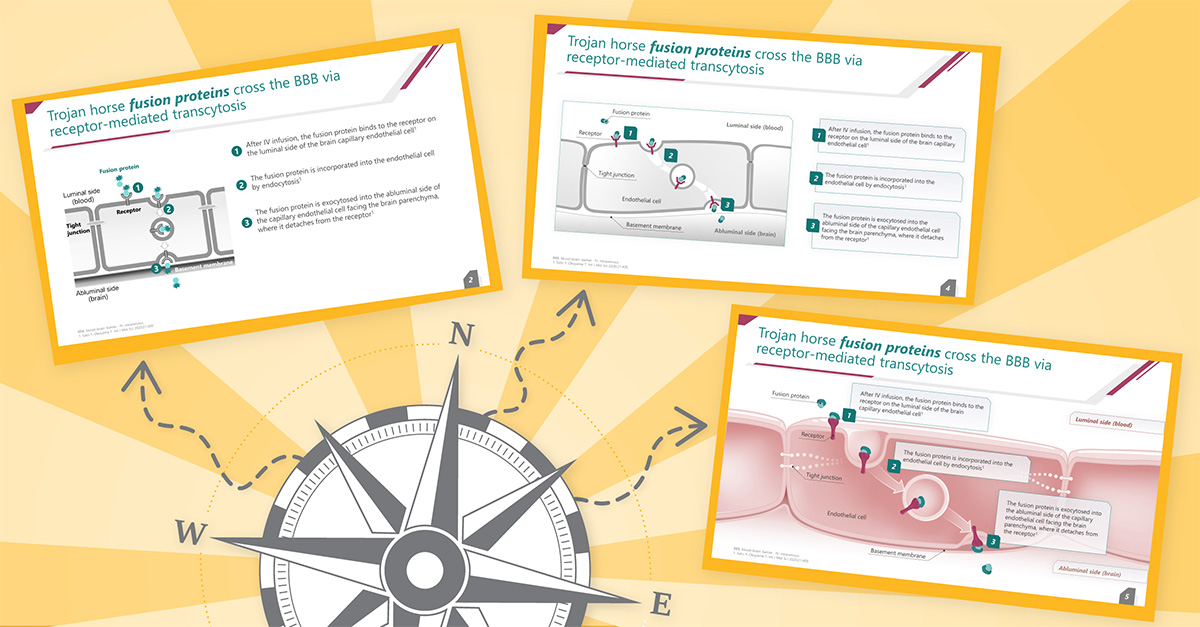Navigating the price range: Unraveling the factors behind visual storytelling solution costs
As a visual storytelling agency, we often face the question of cost when we receive a project briefing and create a proposal. It’s an understandable question. But the answer can vary greatly. In many cases, we first need to provide a price range, which naturally leads clients to wonder, “what do I get for the lower end, and what do I get for the higher end?”
Today, we want to address this question by using an example from a self-study module for scientific training. The task at hand is to explain a relatively simple molecular mechanism. As a starting point, our client provides an input slide with a written description and a simple sketch.
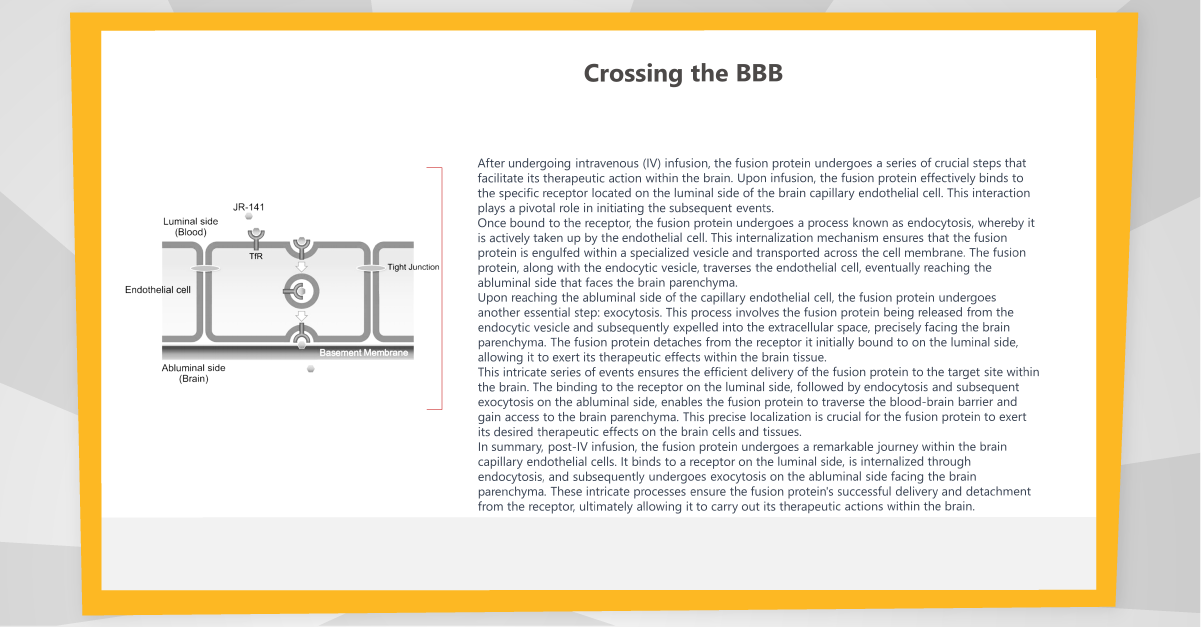
So what can we do to improve this slide? At the very least, an experienced medical content developer needs to get familiar with the content and the client’s communication objectives to determine the most effective way to convey the information. Some basic improvements are inserting the content into a slide master, writing a headline with a clear message, reducing the text to the essential info, and labeling these steps while keeping the simple illustration from the input slide.
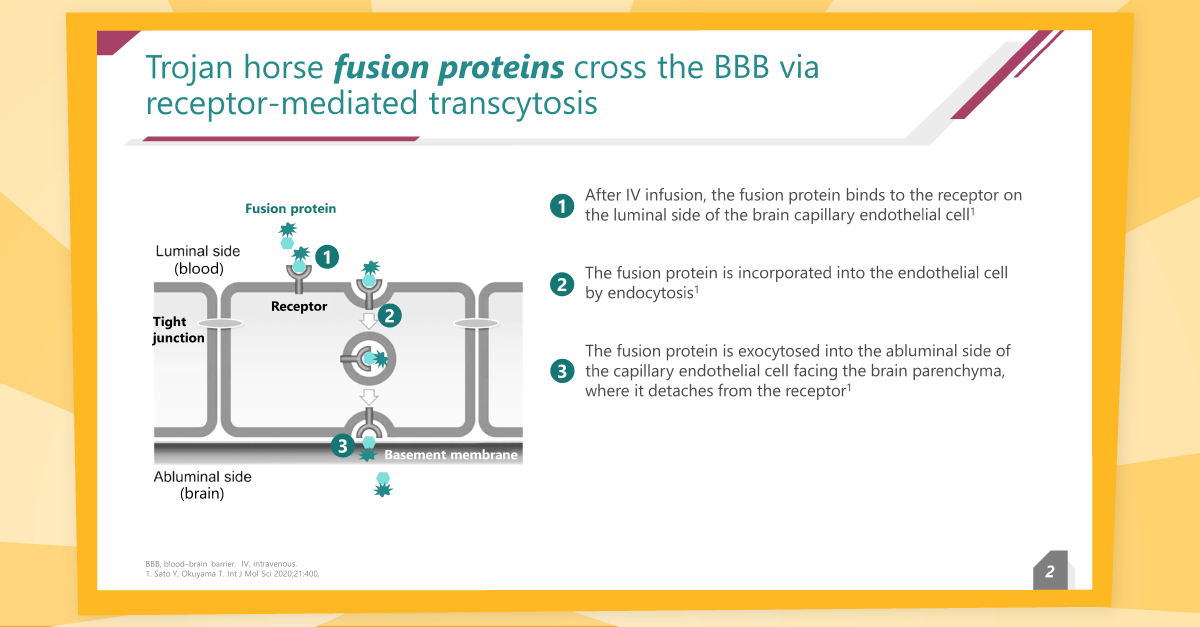
With a bit more effort, we can enhance the illustration visually, and better differentiate the individual steps on the slide using design elements. This improves the legibility and makes it easier to understand the illustration. However, it remains a static slide where the learner still needs to make some effort to engage with the content.
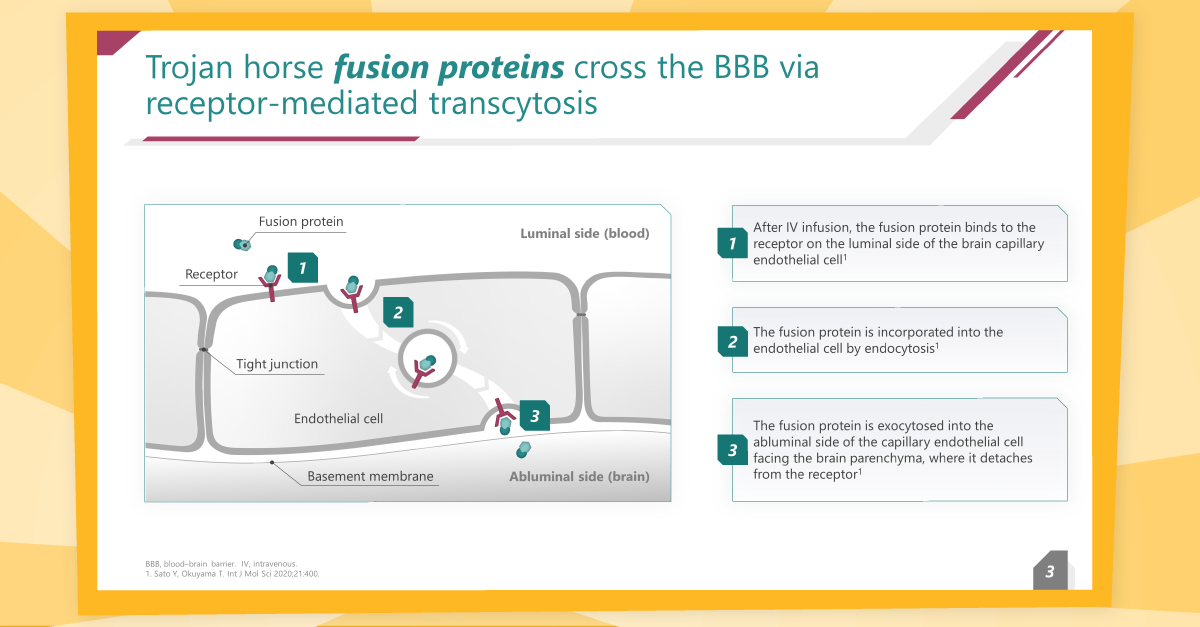
To further enhance the didactic value, a sequential build-up can be added. This provides the learner with a clear starting point on the slide, allowing them to navigate the content quickly and intuitively using clickable elements. Step by step, their attention is guided through the content, keeping them focused.
If a slide is especially important for your learning objectives, it can make sense to invest even more in visual and didactic improvements. Adding a voice-over (VO) can make the content more engaging, especially for auditory learners. Visuals can be illustrated in a more vibrant and impressive style to make them more memorable. Naturally, additional steps are required for this type of learning experience, such as writing a voice-over script, timing animation to the voice-over, and illustrating the visuals in a more sophisticated style.
In conclusion, there is no one-size-fits all budget for a project, which is why sometimes it makes sense to discuss price ranges and the various features that will add the most value for you and your target audience. Or to put it another way: Like elevating specific flavors in a dish with some premium ingredients, the most effort, time, and budget should be allocated to making the most important content.
